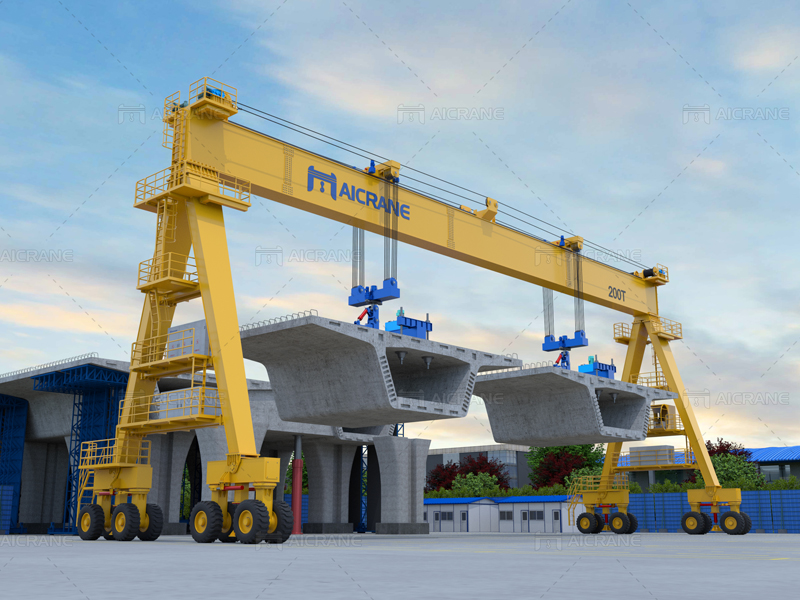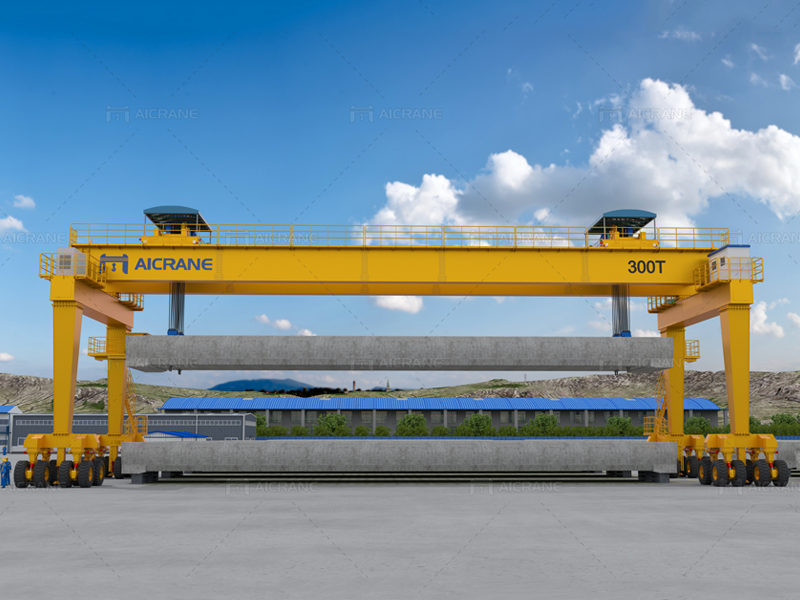In the realm of material handling and cargo transportation, gantry cranes play a pivotal role in ensuring efficient and seamless operations. Among the various types of gantry cranes, the rubber-tired gantry crane (RTG) and the fixed gantry crane stand out as two distinct configurations, each tailored to specific operational needs. This article delves into the nuances of these cranes, highlighting their differences, advantages, and applications.

I. Rubber-Tired Gantry Crane (RTG):
A. Mobility and Flexibility:
The defining characteristic of an RTG lies in its mobility. Unlike its fixed counterpart, a rubber tired gantry crane is equipped with rubber tires, allowing it to move freely within a designated area. This flexibility is particularly advantageous in container yards, where the crane can navigate between rows of containers with ease. The ability to change positions swiftly enhances operational efficiency and reduces the need for extensive rail or runway systems.
B. Drivetrain and Power Source:
RTGs are typically powered by diesel engines or electricity, providing operators with the flexibility to choose the most suitable power source for their specific requirements. The rubber tires enable the crane to traverse various terrains, making it well-suited for outdoor applications, such as port terminals and shipping yards.
C. Stacking and Container Handling:
One of the primary functions of an RTG is the stacking and handling of shipping containers. These cranes are designed with a spreader mechanism that can lift and move containers with precision. The ability to stack containers in multiple rows and lift them to significant heights makes RTGs indispensable in container terminals where space optimization is crucial.

II. Fixed Gantry Crane:
A. Stability and Structural Design:
In contrast to the mobility of an RTG, a fixed gantry crane is firmly anchored to the ground. Its stability is derived from a fixed structure that is either mounted on rails or embedded into the ground. This design provides enhanced load-bearing capacity, making fixed gantry cranes suitable for heavy-duty lifting operations.
B. Rail-Mounted Configuration:
Some fixed gantry cranes are mounted on rails, allowing them to move along a predetermined path. This rail-mounted configuration provides a degree of lateral movement but lacks the versatility of a tyre mounted gantry crane. Fixed gantry cranes on rails are commonly used in manufacturing facilities and storage yards, where a linear path suffices for the required operations.
C. High Load Capacity:
One of the key advantages of fixed gantry cranes is their ability to handle heavier loads compared to RTGs. This makes them ideal for applications such as steel mills, construction sites, and other industrial settings where lifting capacities are a critical factor.
III. Comparative Analysis:
A. Cost and Maintenance:
RTGs are generally more expensive to acquire and maintain due to their complex mobility systems, which include tires, drive mechanisms, and power sources. On the other hand, fixed gantry cranes, especially those without mobility features, often have lower upfront costs and maintenance requirements.
B. Space Utilization:
RTGs excel in environments where space optimization is crucial, thanks to their ability to navigate through container yards efficiently. Fixed gantry cranes, while sturdy and capable of handling heavier loads, may require more space for their fixed structure and linear path.
C. Application-Specific Considerations:
Choosing between an RTG and a fixed gantry crane ultimately depends on the specific requirements of the application. RTGs are favored in container terminals and port facilities where container handling efficiency and space utilization are paramount. Fixed gantry cranes, on the other hand, find their niche in industries with heavy lifting requirements and a need for a stable, stationary structure.
Conclusion:
In the dynamic world of material handling, the choice between a rubber-tired gantry crane and a fixed gantry crane hinges on a careful consideration of operational needs, space constraints, and budgetary considerations. While the RTG offers unparalleled mobility and container handling capabilities, the fixed gantry crane excels in stability and high load capacities. As technology continues to advance, innovations in gantry crane design may further blur the lines between these two configurations, providing even more tailored solutions for diverse industrial applications. To learn more about these cranes, visit https://steelmillcranes.com/